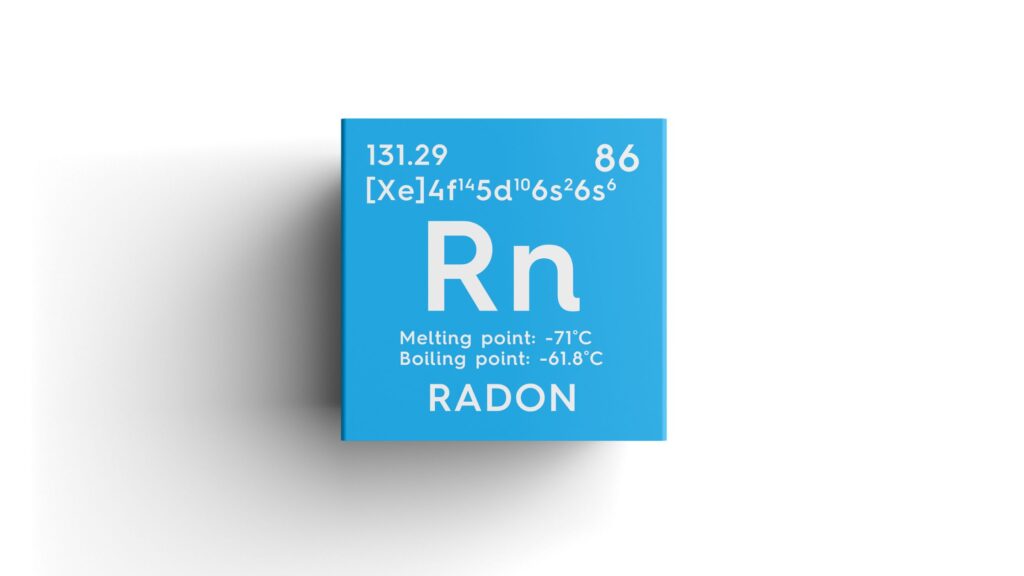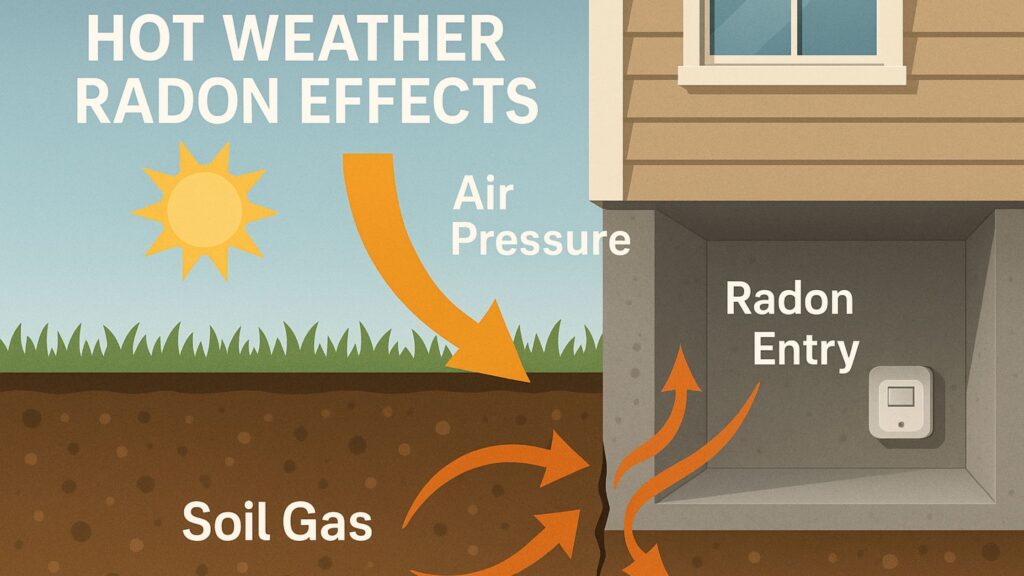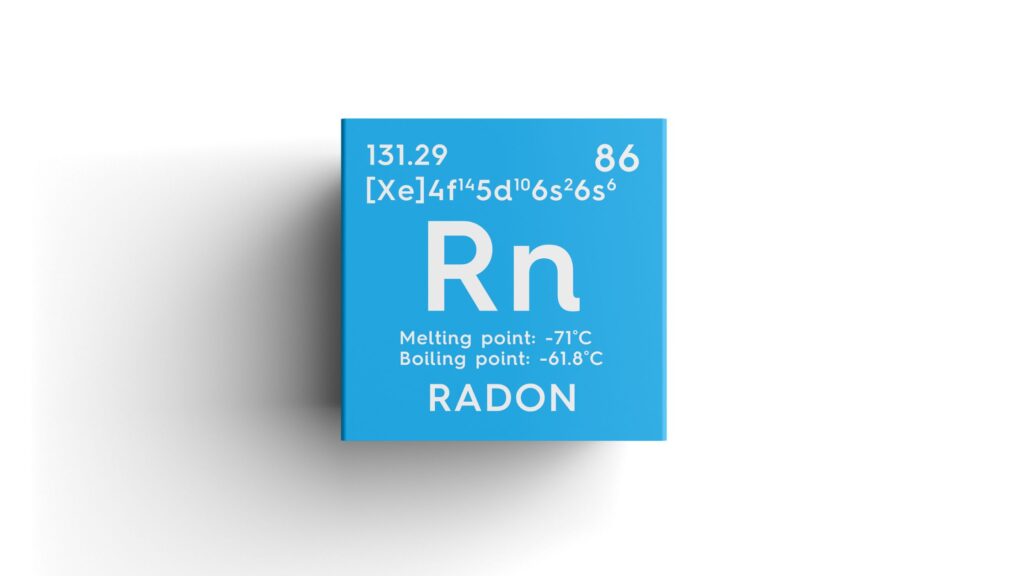Radon is a naturally occurring radioactive gas formed from the breakdown of uranium in soil and rock. It enters homes through cracks, small openings, and gaps in the foundation without giving any sign of its presence. Because radon is invisible, odorless, and tasteless, it can accumulate quietly and remain undetected for years. As the second leading cause of lung cancer in the U.S., radon is a serious hazard that every homeowner should monitor by testing regularly.
During winter, radon levels typically rise due to environmental and structural changes inside the home. Windows and doors stay closed, ventilation is reduced, and the cold weather creates pressure differences that draw radon gas from the soil into indoor spaces. These conditions make winter one of the most important seasons to understand how radon behaves—and why testing during colder months is so essential.
So, why do radon levels in winter increase, and how can you determine the right testing method for your home? Below, we explore the main causes of winter radon spikes and the most accurate ways to test your home safely.

What Causes Higher Radon Levels in Winter?
Winter creates conditions that allow radon to accumulate more easily inside homes. Several key factors contribute to this seasonal increase:
1. Stack Effect
Warm air rises and escapes from the top of the home during winter. As it leaves, it creates a suction force known as the stack effect. This vacuum draws cold air from below, pulling radon-rich soil gases into basements and crawl spaces. The colder the outdoor air, the stronger this upward pull becomes.
2. Closed-House Conditions
In winter, windows and doors remain tightly shut to retain heat. This reduces natural airflow and ventilation. With very little fresh air entering the home, radon becomes trapped, allowing indoor concentrations to rise more quickly than in warmer months.
3. Frozen Ground
Frozen soil acts like a seal, trapping radon beneath the surface. When the ground cannot vent radon outward, the gas seeks easier pathways—often into homes through cracks or openings in the foundation.
4. Increased Heating Usage
Heating systems can create small pressure changes in the home. Forced-air furnaces and other heating systems sometimes increase radon levels by drawing more soil gas inside while circulating indoor air.
Together, these factors explain why radon levels are generally highest during the winter season.
Short-Term Radon Tests in Winter
Short-term radon tests measure radon levels over a short duration—typically 2 to 90 days. Most commonly, homeowners use tests that run for 2 to 7 days. Short-term tests are especially useful during winter because they quickly show whether radon levels are elevated during peak conditions.
A) Pros of Short-Term Tests
- Quick Results: Short-term tests offer fast insights and can quickly confirm whether radon levels exceed the EPA action level of 4.0 pCi/L.
- Easy to Use: These kits are simple to place and don’t require specialized knowledge. They’re available online and in hardware stores.
- Effective for Winter Screening: Because radon levels are naturally higher in winter, short-term tests provide a clear picture of immediate risk and help determine if follow-up testing or mitigation is needed.
B) Cons of Short-Term Tests
- Seasonal Spike May Skew Results: Winter readings may be higher than your home’s annual average, potentially leading to results that reflect temporary conditions.
- Weather-Dependent: Winter storms, atmospheric pressure changes, and temperature swings can influence short-term radon readings, affecting accuracy.
Short-term tests are an excellent first step, but long-term testing is recommended for a more complete and balanced assessment.

Long-Term Radon Tests in Winter
Long-term radon tests measure levels over 90 days to one full year, providing a more accurate reflection of average radon exposure. These tests account for both seasonal highs and lows.
A) Pros of Long-Term Tests
- More Accurate: Because they cover long time periods, long-term tests deliver a clearer and more reliable average radon reading.
- Seasonal Coverage: Including winter ensures that seasonal spikes are captured and factored into the final results.
- Best for Long-Term Safety: If you want dependable information for health decisions or home improvements, long-term tests are the best option.
B) Cons of Long-Term Tests
- Slow Results: Long-term testing requires patience because you won’t get immediate results.
- Less Practical for Urgent Needs: If you’re preparing for a home sale or suspect dangerously high radon levels, waiting months for results may not be ideal.
Which Test Should You Choose in Winter?
The right testing method depends on your timeline and need for accuracy.
Choose a Short-Term Test If:
- You need fast results during winter
- You suspect high radon levels
- You want an initial reading before planning mitigation
Choose a Long-Term Test If:
- You want the most accurate overall assessment
- You want to evaluate both high winter levels and lower summer levels
- You want data for long-term health protection
Many experts recommend using both: start with a short-term winter test and follow up with a long-term test for complete accuracy. Learn more about How Weather Changes Impact Radon Levels in Your Home.
When Should You Test for Radon?
Winter is the ideal time to test for radon since levels are usually at their highest. However, additional testing is recommended:
- Every two years
- After major renovations
- After sealing basements or crawl spaces
- After installing or modifying HVAC systems
- When buying or selling a home
Because radon levels can change due to weather, soil shifts, or home improvements, routine testing is essential.

Conclusion
Radon levels in winter rise due to the stack effect, frozen soil, heating systems, and reduced ventilation. Whether you choose a short-term or long-term test depends on your need for quick results or accurate year-round data. Short-term tests provide immediate insight into winter spikes, while long-term tests offer a stable and reliable overview of radon exposure.
By testing regularly and acting promptly on results, you can protect your home and maintain a healthy indoor environment throughout the year. To learn more about radon testing and how to keep your home safe, visit DSM Radon.





